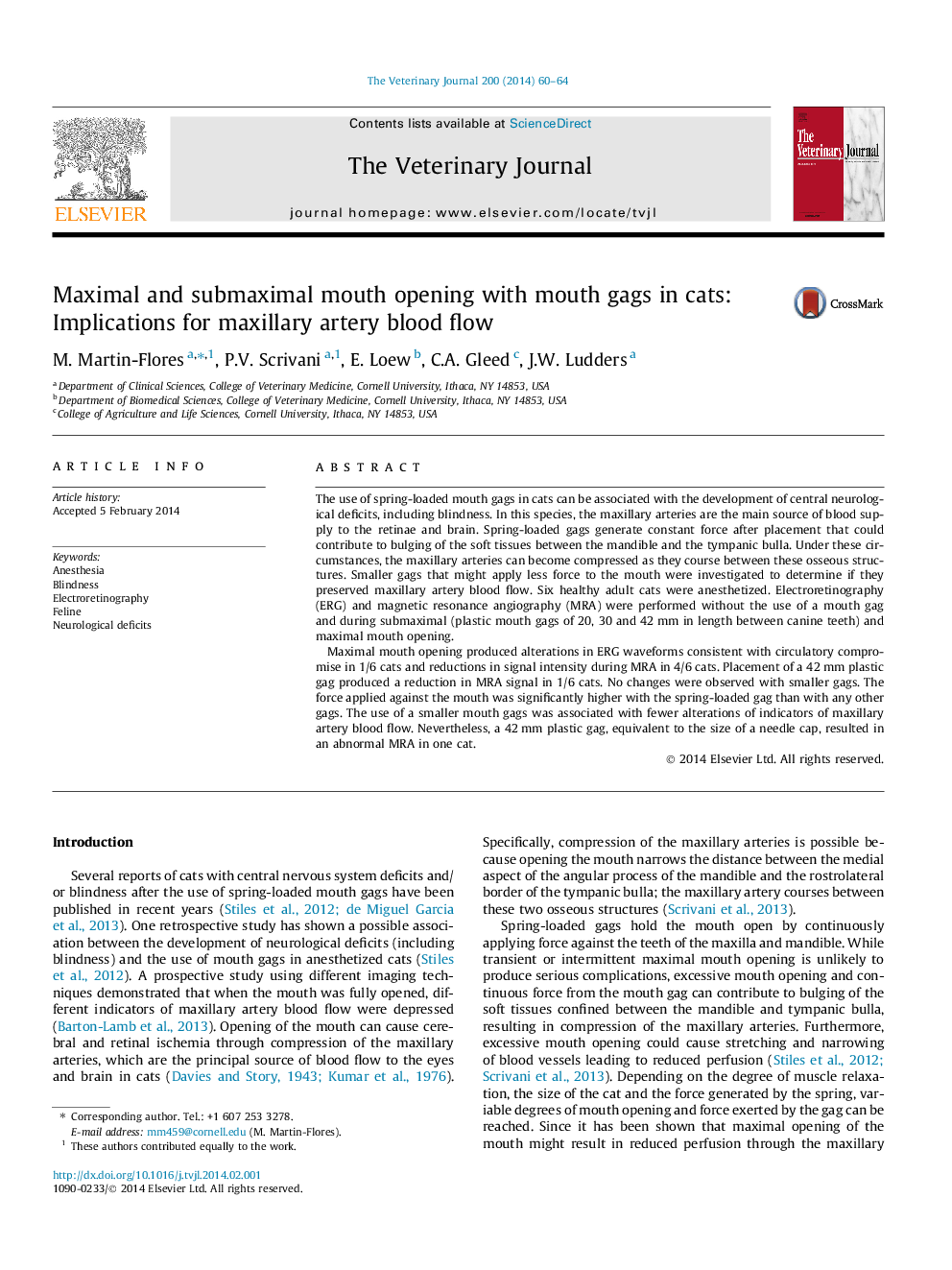| Article ID | Journal | Published Year | Pages | File Type |
|---|---|---|---|---|
| 2463999 | The Veterinary Journal | 2014 | 5 Pages |
The use of spring-loaded mouth gags in cats can be associated with the development of central neurological deficits, including blindness. In this species, the maxillary arteries are the main source of blood supply to the retinae and brain. Spring-loaded gags generate constant force after placement that could contribute to bulging of the soft tissues between the mandible and the tympanic bulla. Under these circumstances, the maxillary arteries can become compressed as they course between these osseous structures. Smaller gags that might apply less force to the mouth were investigated to determine if they preserved maxillary artery blood flow. Six healthy adult cats were anesthetized. Electroretinography (ERG) and magnetic resonance angiography (MRA) were performed without the use of a mouth gag and during submaximal (plastic mouth gags of 20, 30 and 42 mm in length between canine teeth) and maximal mouth opening.Maximal mouth opening produced alterations in ERG waveforms consistent with circulatory compromise in 1/6 cats and reductions in signal intensity during MRA in 4/6 cats. Placement of a 42 mm plastic gag produced a reduction in MRA signal in 1/6 cats. No changes were observed with smaller gags. The force applied against the mouth was significantly higher with the spring-loaded gag than with any other gags. The use of a smaller mouth gags was associated with fewer alterations of indicators of maxillary artery blood flow. Nevertheless, a 42 mm plastic gag, equivalent to the size of a needle cap, resulted in an abnormal MRA in one cat.
